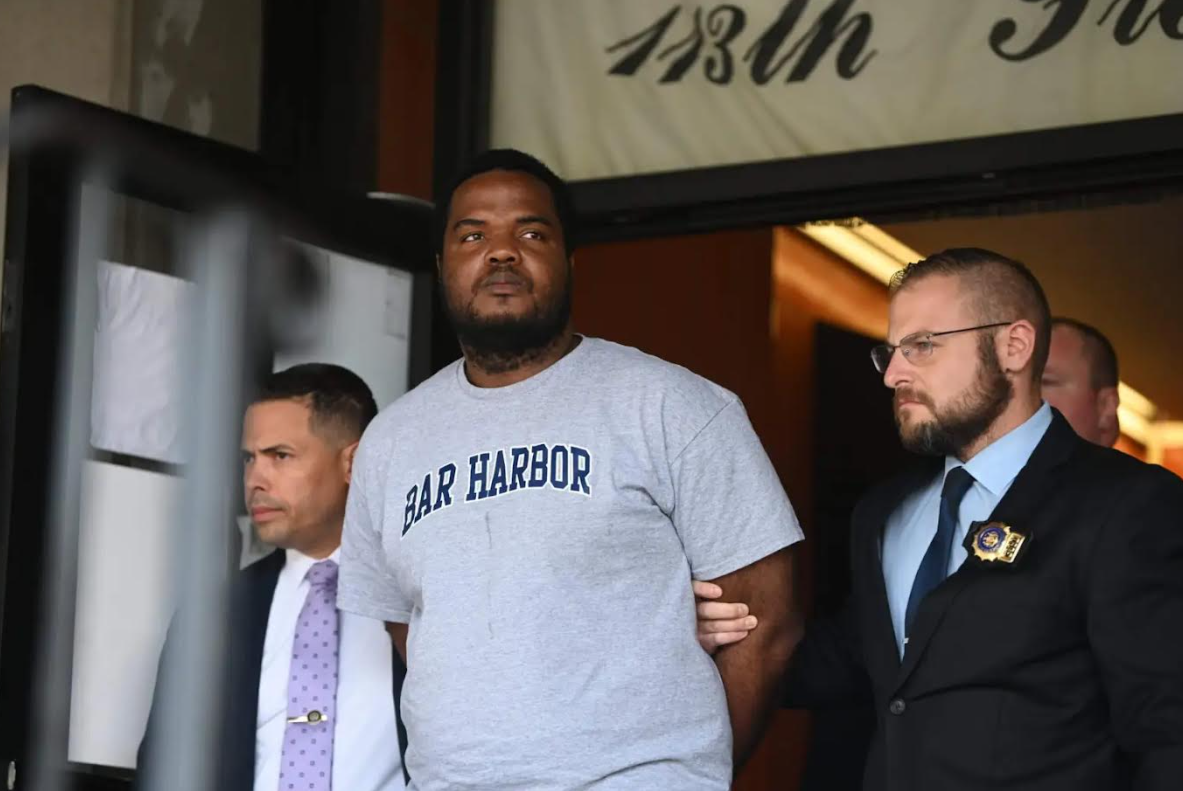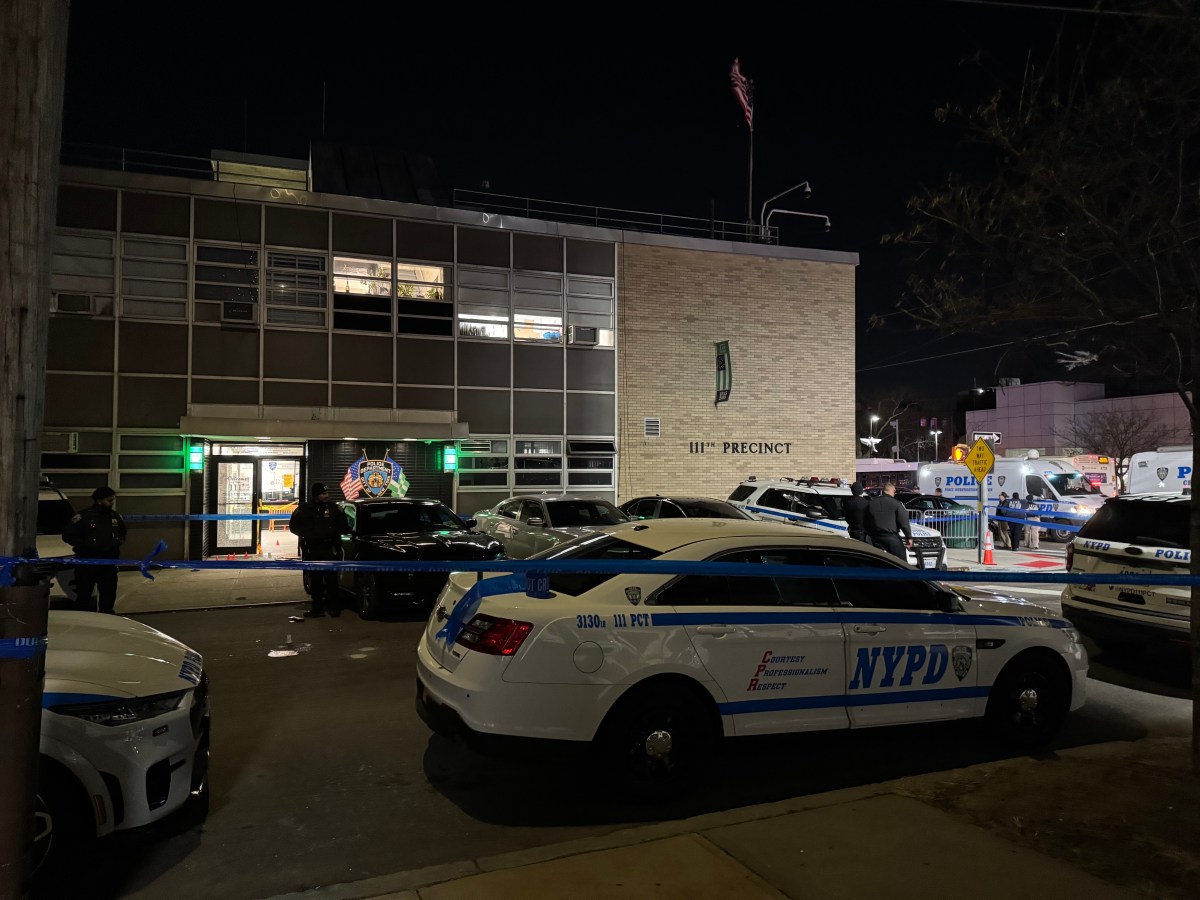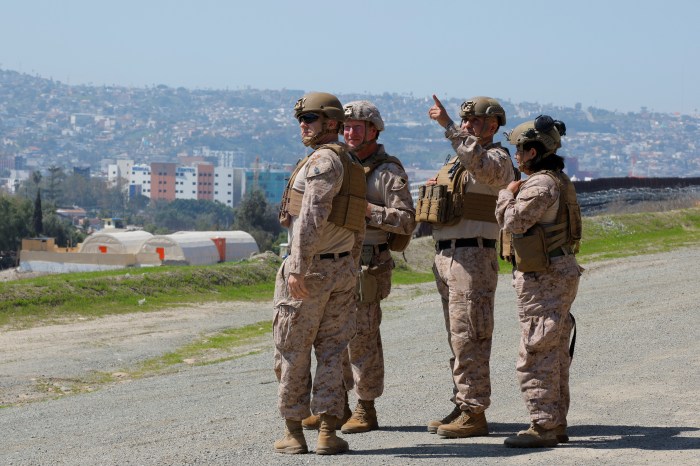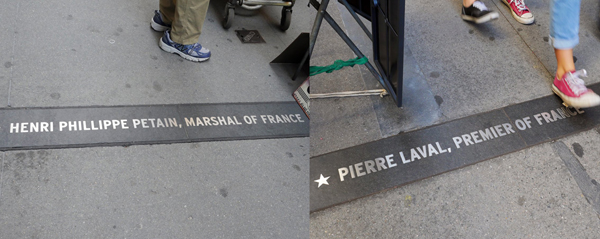
The sidewalk plaques commemorating parades down the Canyon of Heroes in 1931 for later Nazi collaborators Philippe Pétain and Pierre Laval — which flank Broadway just north of Morris Street — are the first targets of Mayor de Blasio’s campaign to rid city property of hate-tainted monuments.
BY COLIN MIXSON
After plans to remove a Confederate statue in Virginia led to deadly protests down south, Mayor de Blasio vowed to systematically expunge “symbols of hate” from all city property, and tweeted that the purge would begin with removing plaques honoring Nazi collaborators along the “Canyon of Heroes,” on lower Broadway.
“The commemoration for Nazi collaborator Philippe Pétain in the Canyon of Heroes will be one of the first we remove,” the mayor tweeted Wednesday.
Sidewalks along the Canyon of Heroes feature 164 granite plaques along Broadway from Bowling Green to City Hall Park, one for each of the city’s beloved ticker-tape parades along their traditional route.
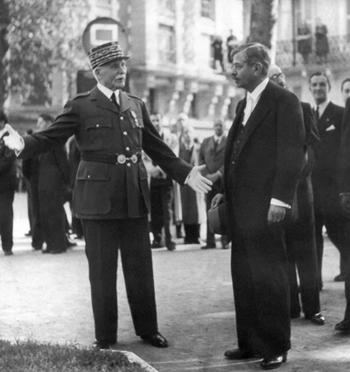
Marshal Philippe Pétain as Chief of State, at right, and Pierre Laval as Minister of Foreign Affairs, interior and propaganda, led the rump puppet state of Vichy France, and collaborated with the Nazis in deporting French Jews to death camps.
Among those includes tablets baring the names of Pétain — who during World War II led the rump puppet state of Vichy France and worked with Nazi’s to suppress French resistance and round up Jews for the concentration camps — and Pierre Laval, an even more reviled Franco-Nazi collaborator, whose plaque is also expected to be included in a 90-day review of symbols of hate the mayor called for, also by tweet.
The plaques were installed as part of a 2004 street improvement project envisioned by the Downtown Alliance, and were subject to review by the city’s Department of Transportation and Public Design Commission, which approved engraving the French names into Broadway long after their legacy had become inseparably tied to Hitler’s Final Solution, said Alliance spokesman Andy Breslau.
But the plaques don’t specifically honor Pétain and Laval, according Breslau. Instead, they commemorate historic instances of the parades themselves, both of which occurred just days apart in 1931, about a decade before France fell to the Nazis.
“The thinking at the time was that this was a piece of notable New York history, which could be marked with these inlays,” Breslau said. “It was never designed to endorse.”
The Alliance has no official stance when it comes to the mayor’s purge of questionable memorials, or his first intended targets, according to Breslau, who said the BID “looks forward to working with the mayor” in reviewing public sculptures and other memorials Downtown.
But several notables New York City has chosen to honor through its iconic parades have later fallen on the wrong side of history, and their accomplishments are marred by political beliefs and policies that are considered unconscionable by today’s standards.
In 1927, for instance, the city honored Charles Lindbergh for his daring solo flight across the Atlantic Ocean. The legendary aviator was later notoriously supportive of the Nazis, however, and infused his arguments for U.S. neutrality in the war with racist, anti-Semitic rhetoric.
And a 1962 ticker tape honored Iranian Shah Mohammad Reza, a dictator installed by the Central Intelligence Agency, whose reign was marked by oppression and brutality that paved the way for his overthrow in 1979 and the establishment of a theocratic state that exports terrorism.
It’s important that lines are drawn in determining the moral standards by which historical figures are judged, or else risk New York City’s many splendid statues and cherished landmarks being sacrificed on the altar of modern political sensibilities, according to Brooklyn Assemblyman Dov Hikind, who first brought the Pétain and Laval plaques to the mayor’s attention in May.
“It’s going to be complicated,” Hikind said. “Certain standards have to be set.”
When the plaques were brought to Hizzoner’s attention about three months ago, de Blasio was sympathetic to the state lawmaker’s concerns, but reluctant to immediately removing the memorials, fearing that destroying one tribute might lead to demands that others be discarded, Hikind recounted.
“He was clear about dealing with it — it was a question of how to deal with it, because once the city decided to do something, what about all the other things that might be objectionable to people for one reason or another?” Hikind said.
In the wake of riots in Charlottesville, Virginia, however, the mayor seems to have decided to take action, and while it remains to be seen exactly how that review will be conducted, it appears that at least one standard for demolition — abetting the Holocaust — has been set, according to Hikind.
“You have to set some kind of limit,” said Hikind. “A mass murderer, someone responsible for rounding up Jews, that’s a no brainer. Otherwise, it’s going to get very interesting.”
















